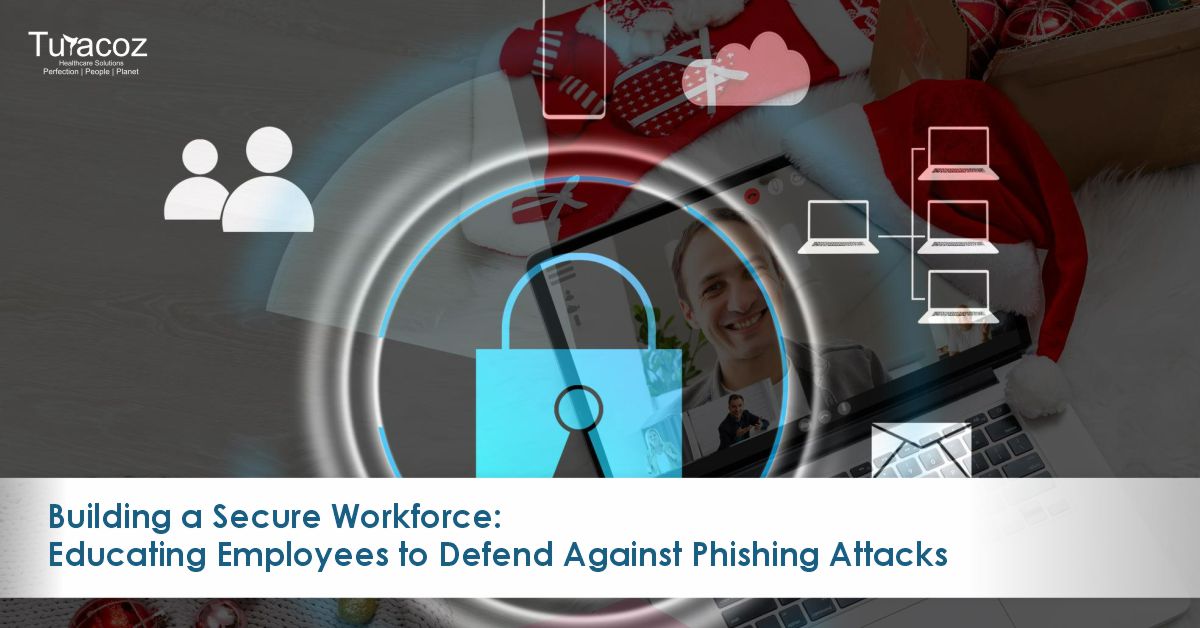In today’s digital age, where cyber threats are on the rise, organizations face an ever-present danger in the form of phishing attacks. These fraudulent attempts to deceive individuals and gain unauthorized access to sensitive information can cause significant harm to both businesses and their employees. However, the first line of defense against such attacks lies within a well-informed and vigilant workforce.
To protect your company’s valuable assets, it is crucial to educate employees about the various types of phishing emails and empower them to identify and report potential threats effectively. By conducting regular training sessions, providing real-life examples, and fostering a security-conscious culture, organizations can significantly enhance their overall security posture.
This blog post aims to explore the importance of employee education in mitigating the risk of phishing attacks. We will delve into the key strategies and best practices for effectively educating employees about phishing, emphasizing the significance of continuous learning and adaptation in the face of evolving threats.
Conduct Regular Training Sessions:
To lay the foundation for a secure workforce, organizations should conduct regular training sessions dedicated to phishing awareness. These sessions can be led by internal IT departments or external cybersecurity experts. The following key points should be covered during the training:
-
Explain Phishing Techniques:
Employees need to understand the common techniques employed by attackers in phishing attempts. Educate them about email spoofing, deceptive URLs, and social engineering tactics. Provide tangible examples and demonstrate how attackers manipulate recipients into divulging sensitive information or taking unauthorized actions.
-
Recognize Red Flags:
Train employees to identify red flags associated with suspicious emails. These may include unfamiliar senders, spelling, and grammar errors, urgent or threatening language, requests for sensitive information, or unexpected attachments or links. Emphasize the importance of verifying the legitimacy of emails before taking any action.
-
URL and Link Awareness:
Teach employees to exercise caution when encountering links in emails. Encourage them to hover over links to view the actual destination URL and advise against clicking on links in unsolicited or suspicious emails. Instead, encourage them to manually type URLs or use bookmarks to access known websites.
-
Email Attachment Precautions:
Advise employees to be cautious when opening email attachments. Instruct them to scan attachments with antivirus software before opening them, even if the email appears legitimate. Encourage the use of secure file-sharing services for larger attachments rather than relying solely on email attachments.
-
Social Engineering Awareness:
Raise awareness about social engineering tactics used by attackers, such as impersonating executives or IT support personnel. Teach employees to verify requests for sensitive information or unusual actions through established channels, such as contacting the person directly or using a known phone number.
Read More:- Safeguard Your Company: Effective Strategies to Secure Against Phishing Email Attacks
Provide Real-Life Examples:
To reinforce the severity and potential consequences of phishing attacks, share real-life examples of successful incidents. Illustrating the impact on the company, personal information, and individual roles can help employees understand their critical role in maintaining security. By demonstrating the realistic nature of phishing attacks, employees are more likely to remain vigilant and adhere to security protocols.
Offer Interactive Training:
Engaging employees through interactive training methods can significantly enhance their knowledge retention and preparedness. Conduct simulated phishing exercises and quizzes to test employees’ ability to identify and report suspicious emails. Provide feedback and guidance based on the results, reinforcing correct behaviors, and addressing areas that require improvement. These interactive exercises foster a proactive approach to security and empower employees to actively contribute to the protection of the organization.
Establish Reporting Channels:
Clear communication regarding the procedure for reporting suspicious emails or potential phishing attempts is vital. Encourage employees to report any suspected incidents promptly, even if they are uncertain. Establish dedicated reporting channels, such as a specific email address or reporting tool, to streamline the process. This enables the IT team to investigate and take appropriate action, further fortifying the organization’s defenses.
Reinforce Training:
Education is an ongoing process, and it is essential to reinforce training material regularly. Utilize various communication channels such as reminders, newsletters, posters, and internal messaging systems to share updates on emerging phishing techniques, recent incidents, and success stories of employees who successfully identified and reported phishing emails. Continuous reinforcement keeps security practices at the forefront of employees’ minds, ensuring a culture of heightened vigilance.
Foster a Security-Conscious Culture:
To create a robust security environment, foster a culture that prioritizes cybersecurity and encourages open communication about potential threats. Instill a sense of responsibility among employees to protect the organization’s information assets. Recognize and reward employees who actively contribute to the security of the organization by reporting phishing attempts or suggesting security improvements. By fostering a security-conscious culture, organizations empower their employees to become active participants in maintaining a secure working environment.
Conclusion
As phishing attacks continue to evolve and pose significant threats to organizations, educating employees becomes a crucial aspect of defense. By conducting regular training sessions, providing real-life examples, offering interactive exercises, establishing reporting channels, reinforcing training materials, and fostering a security-conscious culture, organizations can build a vigilant and proactive workforce capable of identifying and mitigating phishing attacks effectively.
Remember, cybersecurity education is an ongoing process that demands continuous adaptation to stay ahead of the latest phishing trends. By investing in employee education and cultivating a security-focused culture, organizations can bolster their resilience against phishing attacks and safeguard their valuable assets. Empowering employees with knowledge and awareness transforms them into the first line of defense, working collectively to protect the organization from the pervasive threat of phishing.






























